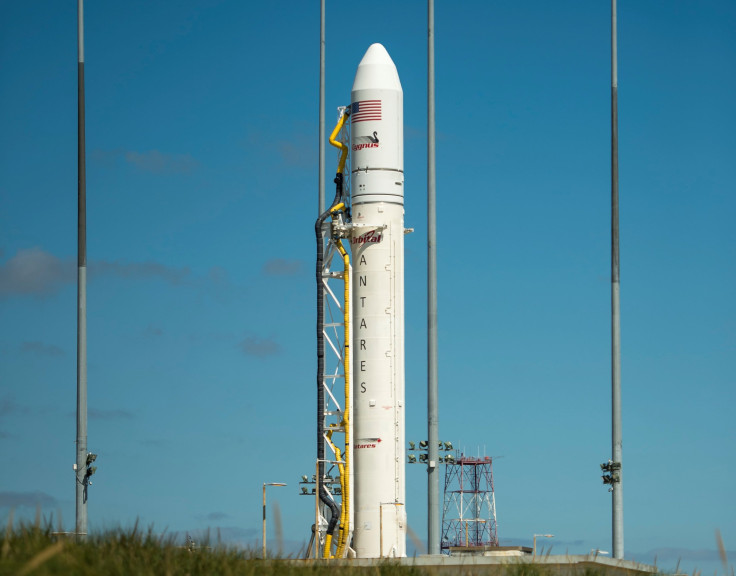Orbital’s Cygnus Cargo Spacecraft Set For Space Station Visit On Wednesday: Where To Watch The Launch Live

Orbital Sciences Corporation (NYSE: ORB), a Dulles, Va.-based space technology company, is set to launch its Antares rocket, carrying the company’s Cygnus cargo spacecraft to the International Space Station, or ISS, on Wednesday from NASA’s launch pad on the Virginia coastline.
The launch of the cargo-laden spacecraft, which is a demonstration mission for Cygnus, is scheduled at 10:50 a.m. EDT from the Mid-Atlantic Regional Spaceport at NASA’s Wallops Flight Facility on Wallops Island, Va.
“Cygnus is one of the most sophisticated spacecraft Orbital has developed and built,” David W. Thompson, Orbital’s president and CEO, said in a statement. “As an integral part of the Space Station program, it meets NASA’s requirements for a human-rated level of safety.”
After being launched by the Antares rocket into a targeted orbit inclined at 51.6 degrees to the equator, Cygnus will carry out a series of tests and maneuvers over a four-day period to demonstrate its readiness to rendezvous and berth with the ISS. At about 7:25 a.m. EDT on Sept. 22, Cygnus will be close enough to the space station to be captured by a robotic arm.
According to Orbital Sciences, the goal of the mission is to show that Cygnus is capable of delivering cargo to the ISS, which could potentially lead to regularly-scheduled missions beginning in December. The demo flight on Wednesday will be the final milestone in the company’s Commercial Orbital Transportation Services, or COTS, joint research and development initiative with NASA.
After the successful completion of the COTS program, Orbital will begin regularly scheduled cargo-delivery missions to the ISS under its $1.9 billion contract with the space agency. Under the contract, Orbital will deliver approximately 20,000 kilograms of net cargo to the ISS over eight missions through 2016.
On the demo mission, Cygnus will deliver approximately 700 kilograms of cargo, including food and clothing, to the Expedition 37 crew, which, in turn, will load Cygnus with cargo to be disposed off back on Earth, prior to its departure from the ISS approximately 30 days later.
East Coasters, Watch The Skies
People residing on the East Coast can expect to see the Antares rocket carrying Cygnus into space on Wednesday morning.
According to Orbital Sciences, the launch window for Antares opens at 10:50 a.m. and closes at 11:05 a.m. EDT. The trajectory will move southward as the window progresses, meaning that for viewers north of the launch site, such as those living in Annapolis, Md., it will appear to be lower on the horizon.
For viewers northeast of the launch site, such as in Washington, it will appear to be farther to the right, while for viewers east of the launch site, like in Richmond, Va., the trajectory will roughly follow the same path as the one viewed by Washington residents. On the other hand, for viewers south of the launch site, like those in North Carolina, the trajectory will appear to be higher in the sky.
For more information on how to view the launch from the Mid-Atlantic seaboard, click here. For those who are interested in viewing the launch in the Chincoteague, Va., area, the recommended launch viewing sites are the NASA Wallops Flight facility Visitors Center or the Assateague National Seashore.
A live stream of the Cygnus launch will be available on NASA TV and a webcast can be viewed on www.nasa.gov on launch day. In addition, NASA TV will provide live coverage of the rendezvous and berthing of Cygnus with the ISS.
Click here for more information about NASA briefings and coverage.
© Copyright IBTimes 2024. All rights reserved.












